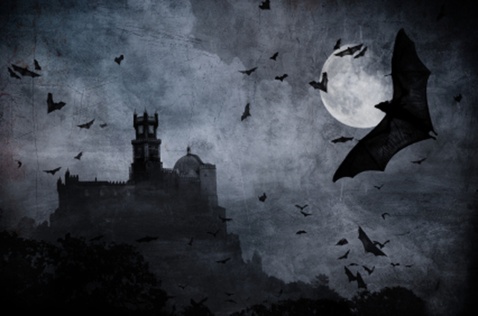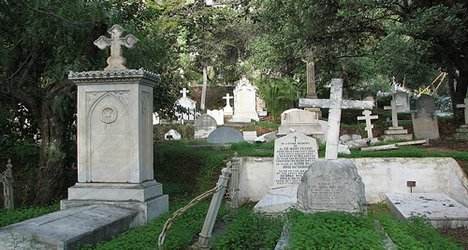
Dark Tourism in Andalucia |
|
Dark Tourism
by Fiona Flores Watson
For many visitors to Andalucia, as well as eating the wonderful tapas made using seasonal local produce, and lying on the pristine beaches, part of the Andalucian experience is finding out about the region’s rich history, both distant and more recent.
As we know, history is not just about glory and success; dark deeds and black moments form part of the past too, weaving a tapestry of heroic deeds, inevitable fate and darkest despair. Nowhere is this more true than Spain, with its painful past of civil war and dictatorship.
As sad as this period of Spanish history was, some would say it’s impossible to understand the country’s present without looking into, and trying to understand, its painful past.
Here are some of the key elements in the darker side of Andalucia’s past.
Operation Mincemeat: The man who never was
In 1943, a British officer’s body is found floating off the coast of Spain, with secret plans for invasion. But all is not what it seems… operation mincemeat.
Civil War
The Civil War in Andalucia affected all parts of the region, which was the first region of the country to fall to General Franco’s forces, but especially Seville and Malaga cities. There are monuments to the fallen all over Andalucia, in cities, towns and in the countryside. Look out for crosses on hilltops.
In some cases, mass graves have been found, in ditches by the side of the road, or in isolated fields; many are still yet to be located. Uncovering the bodies opens up old histories of local enmities and score-settling.
Please be aware that in many cases the Civil War remains a very sensitive subject with Andalucians, with relatives of the dead sometimes living close to those they believe responsible for their loved ones’ deaths, or with the remains of their family members as yet unlocated. For the older generation especially, it is open wound that may never heal. For this reason, always address the subject of the Civil War with extreme caution and sensitivity.
Lorca: literary hero and gypsies’ champion
One of the most famous victims of the Civil war was the poet and playwright and poet, Federico Garcia Lorca. A native of Granada, the left-wing, openly gay writer was shot by Fascist soldiers in the village of Alfacar, near the city. He was killed on 19 August 1936, days before war broke out, at the age of 38. His remains have never been located despite many attempts, most recently in 2009.

A Lorca pilgrimage can take in various sites:
A memorial park in Granada, which also includes Lorca’s family summer home, Huerta de San Vicente, now a museum and cultural centre. This houses family portraits and original furniture, including Lorca’s ink-stained desk, gramophone player and piano.
The Federico Garcia Lorca Park in Alfacar, with a memorial carved in stone close to the olive tree believed by some to mark his grave.
Fuente Vaqueros, the town where Lorca was born.
There is also a film, The Disappearance of Garcia Lorca and the book upon which it is based, Ian Gibson’s The Assasination of Garcia Lorca.
Blood Wedding
The inspiration for the Lorca play Blood Wedding was the ‘Crime of Nijar’, which took place on 22 July 1928 around Cortijo del Fraile, in Campos de Nijar. Read about the events and their aftermath on the Cortijo del Fraile page.
Blas Infante: Revolutionary and the father of Andalucia
The father of modern Andalucia, Blas Infante helped to establish the statute which recognised the region’s autonomy; he also wrote the lyrics to the Andalucian anthem, as learned word-for-word by every child who attends school here. Born in Casares (Malaga), where his family home is an excellent small museum, Infante was president of the first-ever Andalucian assembly.
Like Lorca, Infante was targeted by Francoists for his political beliefs. The politician was arrested in his house in Coria del Rio (Seville) by various members of the Falange in early August 1936. On 11 August, he was taken to the Seville - Carmona road, where he was shot dead. As he fell to the ground, Infante shouted out his famous last words: "Viva Andalucia libre!” (Long live free Andalucia!) A monument at km4 marks the location, and a commemorative service takes place here every year on Andalucia Day (28 February).
The catchily-titled Museum of Andalucian Autonomy celebrates Andalucia’s independence; you can also visit the Moorish-style house in Coria designed by Infante himself in 1931, Dar–al–farah (Casa de la Alegria).
Dia de Todos los Santos – All Saints’ Day 1st November
All Saint’s Day is a national holiday when it’s traditional to go to the graveyard or cemetery with your family, clean and tend the graves of your loved ones, and adorn them with flowers, whether of the fresh or long-life variety. The typical food for this day is the macabrely-named “Huesos de Santos” pastries (Bones of the Dead).
All cities and towns, and often even small villages, have their own cemeteries. If you’re in Spain on 1 November, you’ll be able to witness the flower sellers enjoying their busiest day of the year. It’s an interesting experience to see families carrying with this custom – whether it will last and carry on to the next generation is another question.
The opening scene of the Almodovar film Volver takes place on this day.
Nobody expects… The Spanish Inquisition
This brutal period in Spain’s history saw hundreds of thousands of Jews, Muslims and gypsies arrested, tortured, and put to death by the Catholic Church. A great way to find out about it is Castillo San Jorge, which is effectively an Inquisition museum, by the river in Seville. This was the headquarters of the investigations for three centuries; the walls still remain, so you can see where all the rooms were – guardhouse, kitchen, and the all-important gate where the accused arrived, never to leave again.
The English Cemetery in Malaga has an interesting story

The English Cemetery lies on a hillside very near the historic centre of Malaga. More than 1000 people are buried within its 8,000 square metres; the majority, including its founder, are British but there are also Spanish and Americans, Danes and Swedes among other nationalities. Originally an isolated plot of land on the road to Velez, today the cemetery is surrounded by blocks of apartments and the hustle and bustle of a modern city, but it still retains a sense of peace. If you wander along the terraces you will come across simple headstones, ornate vaults and touching epitaphs, all providing a fascinating insight into life and death in this unique part of Andalucia. More>